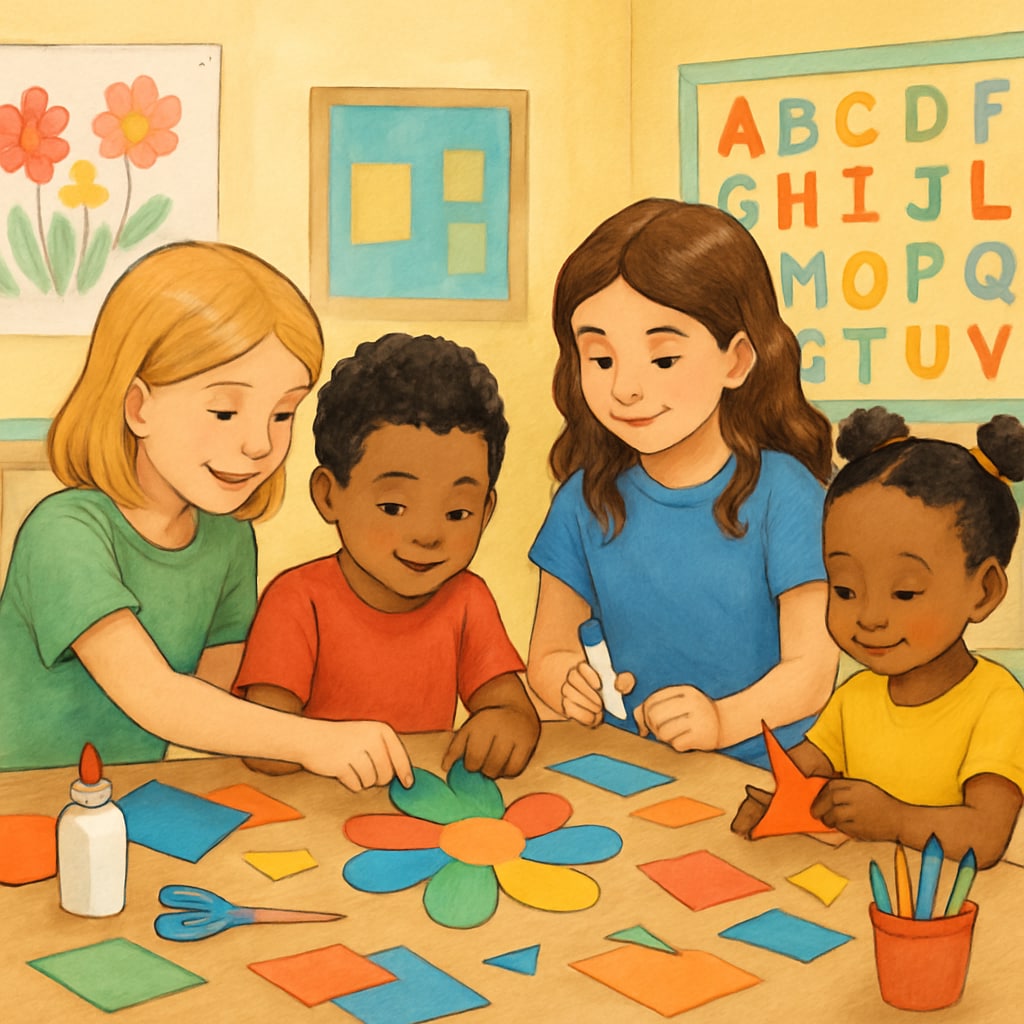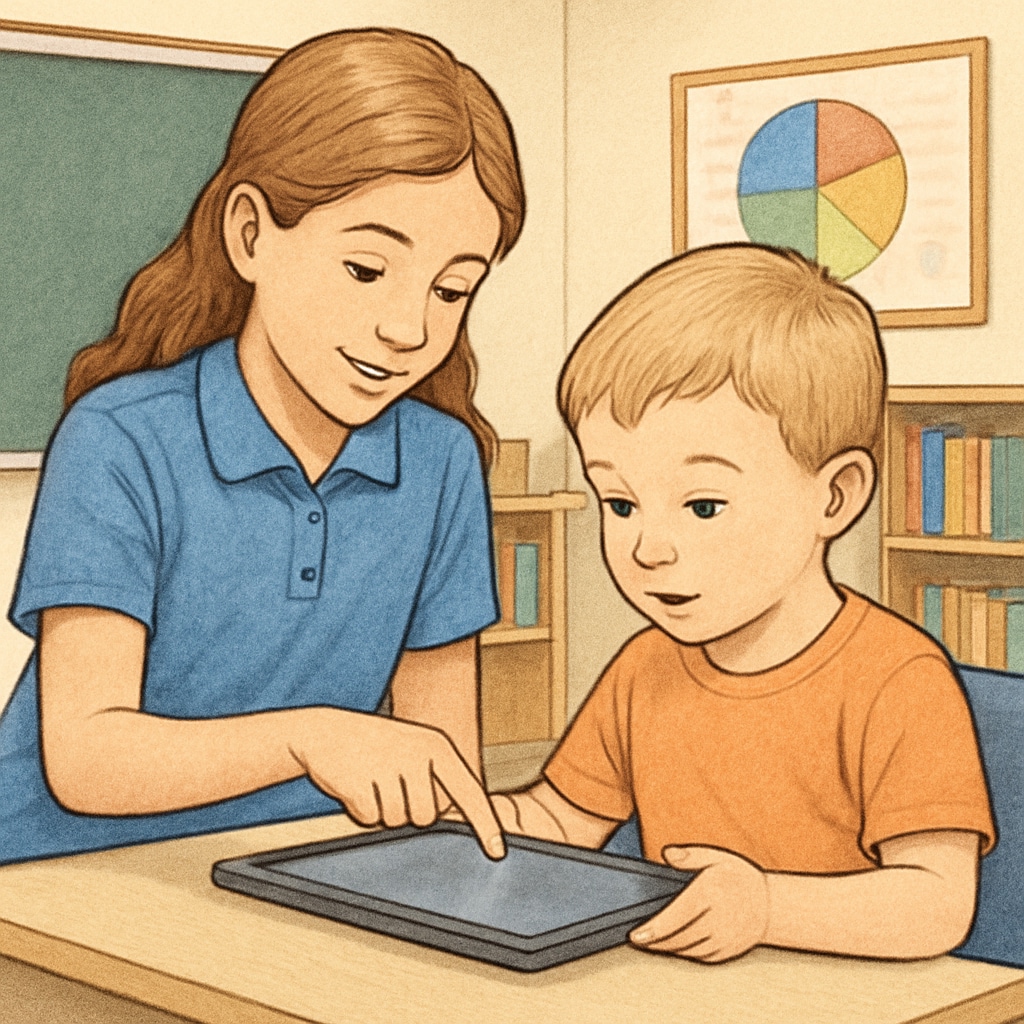Creating meaningful connections between younger and older students can lead to incredible learning opportunities. Cross-grade educational activities, especially those involving kindergarten and fourth-grade students, foster a unique bond that encourages mutual support, creativity, and skill development. By implementing a “kindergarten partner program,” schools can integrate engaging activities such as collaborative projects and structured computer skills learning, promoting growth for both age groups.
Why Cross-Grade Activities Matter
Cross-grade interactions allow students to learn from each other while developing critical social, emotional, and academic skills. Younger children benefit from the guidance and mentorship of older peers, while older students cultivate leadership, patience, and empathy. For example, fourth graders can help kindergarteners navigate early literacy tasks, while kindergarteners inspire creativity with their fresh perspectives.
In addition, these activities create a sense of community and belonging within the school. As a result, students are more likely to engage in collaborative learning experiences that improve interpersonal relationships and foster a love for learning.

Creative Activities for Cross-Grade Partner Programs
Designing activities that cater to the developmental needs of both kindergarteners and fourth graders can seem challenging, but with a bit of creativity, it’s entirely possible. Here are some ideas to get started:
- Storytelling and Book Buddies: Pair older students with younger ones to read stories together. Fourth graders can practice expressive reading while kindergarteners improve their listening and comprehension skills.
- Art and Craft Projects: Collaborative art activities, such as creating murals or decorating bookmarks, encourage teamwork and creativity.
- Shared Science Experiments: Simple experiments, like planting seeds or mixing colors, allow both groups to explore scientific concepts in an engaging way.
- Puppet Shows: Kindergarteners can create puppets, and fourth graders can help script and perform a show, combining creativity with teamwork.
These activities not only promote mutual learning but also ensure that students enjoy a memorable and enriching experience.
Integrating Technology: Structured Computer Skills Learning
In today’s digital world, computer skills are essential. Cross-grade activities can be an excellent way to introduce and enhance these skills in a structured manner. For example, fourth graders can guide kindergarteners in basic computer tasks, such as using a mouse, opening educational apps, or designing simple drawings using software.
Here are a few structured computer-based activities:
- Interactive Learning Games: Use age-appropriate educational software where older students assist younger ones in math or literacy games.
- Digital Story Creation: Fourth graders can help kindergarteners illustrate and narrate their own digital stories using simple tools like Book Creator or Canva.
- Typing Practice: Introduce fun typing games where older students demonstrate proper technique to younger ones.
These activities not only improve technological proficiency but also foster patience and teaching skills in older students. According to Britannica’s article on educational technology, such interactions can enhance learning outcomes and digital literacy for all participants.

Tips for Successful Implementation
To ensure the success of cross-grade activities, consider these tips:
- Preparation: Plan activities that are age-appropriate and align with curriculum goals for both grades.
- Supervision: Provide clear instructions and monitor interactions to ensure safety and positive engagement.
- Reflection: Allow time for both groups to reflect on their experiences, discussing what they learned and enjoyed.
- Consistency: Schedule regular sessions to build stronger bonds between students over time.
By following these guidelines, schools can create a sustainable and impactful partner program that benefits students across age groups.
In conclusion, cross-grade educational activities, such as those involving a kindergarten partner program and structured computer skills learning, offer a dynamic and enriching approach to education. These interactions not only bridge developmental gaps but also create lasting memories, fostering a collaborative and inclusive school culture. For more insights on educational strategies, explore Wikipedia’s education resources.


